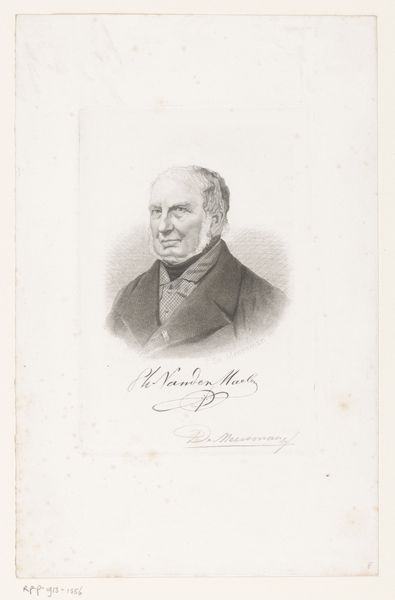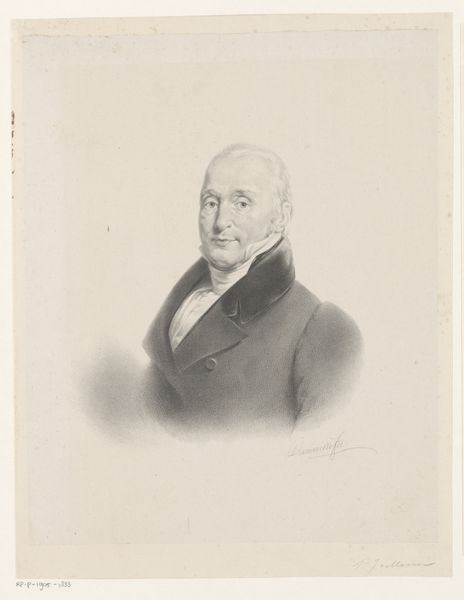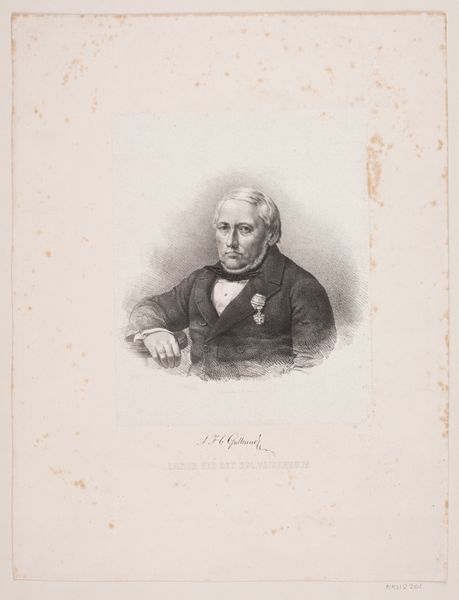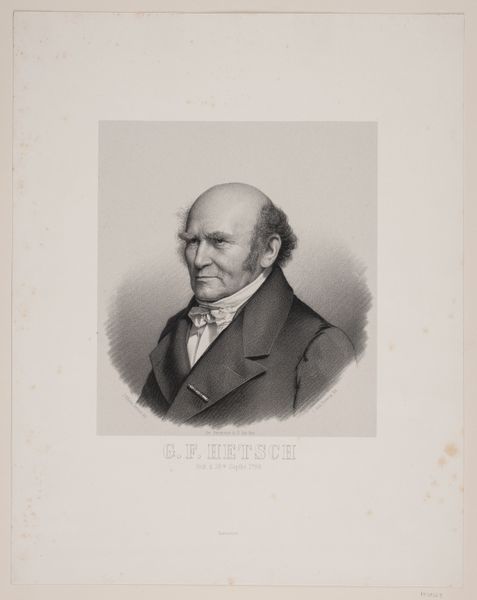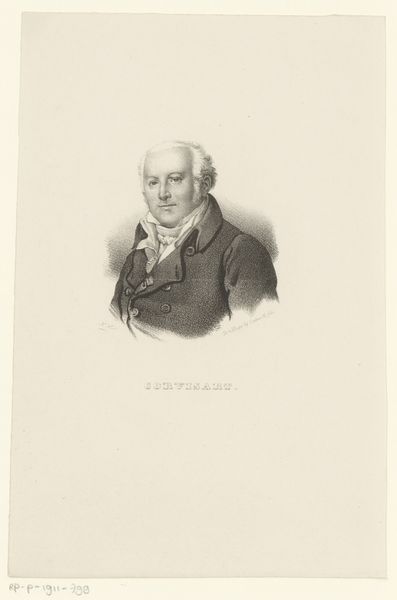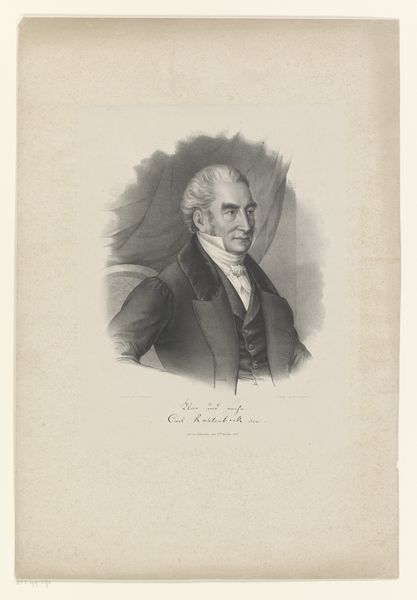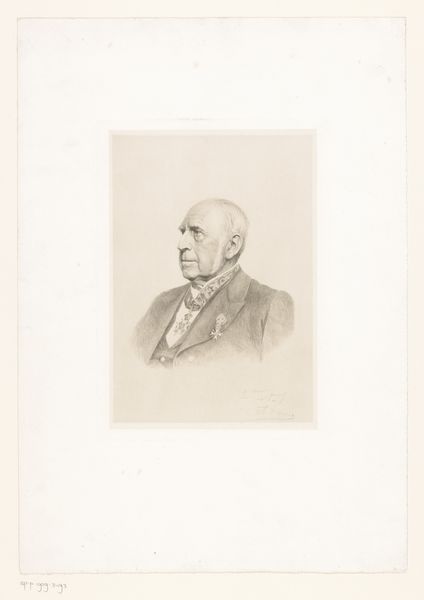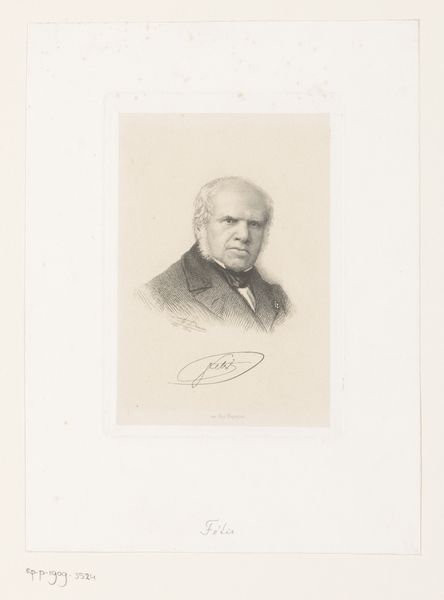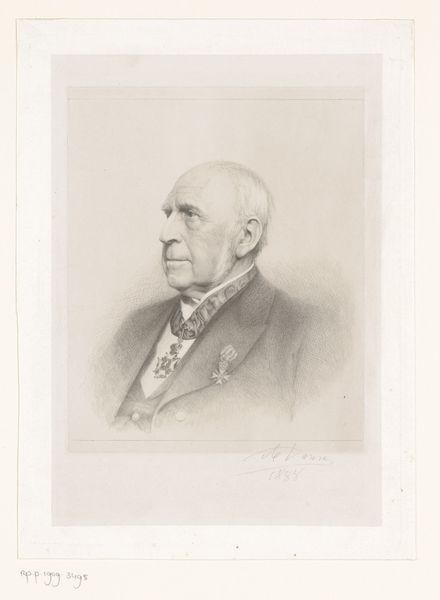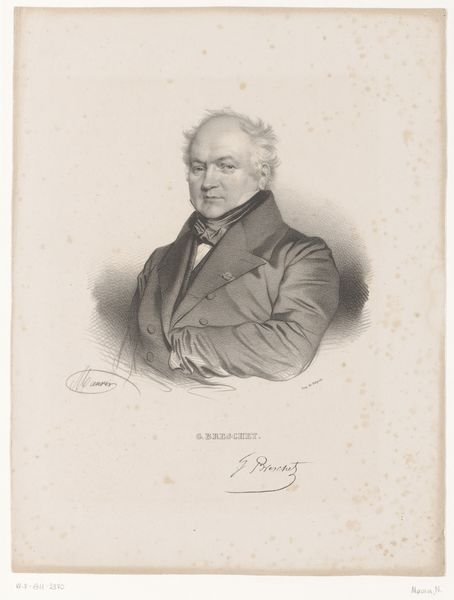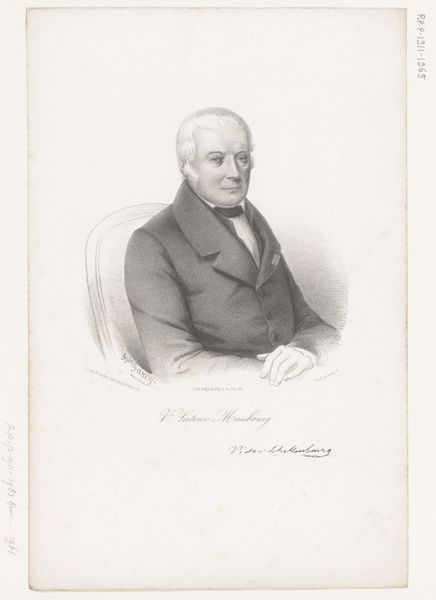
lithograph, print
#
portrait
#
lithograph
# print
#
romanticism
#
portrait drawing
#
academic-art
Dimensions: 386 mm (height) x 290 mm (width) (bladmaal)
Editor: We’re looking at a lithograph from 1840, “Preben Bille-Brahe” by Emil Ditlev Bærentzen, housed at the SMK. It feels very formal and imposing. What's your take? Curator: Indeed. Consider the era: 1840. The lithograph, as a relatively new medium, was becoming a tool for disseminating images of power and status. Bille-Brahe’s stern countenance, his carefully tailored coat and decorations – they all project authority. How do you think this image participates in the construction of masculinity and class? Editor: So, it's less about capturing an individual and more about reinforcing social hierarchies? Curator: Precisely. Think about the Danish context. While Romanticism celebrated individualism, it also buttressed national identity and existing power structures. These portraits affirmed who belonged and who didn't. Do you notice anything else about his gaze or the overall composition that supports this? Editor: I see. His gaze is direct but also distant, almost like he's looking past us. The soft background almost disappears. Curator: Exactly! It elevates him. It encourages us to read him through a lens of privilege and a certain inaccessibility, even. Now, consider who *didn't* get their portrait done in this manner. What narratives are silenced by images like these? Editor: It’s interesting to think about it that way - who has access to representation. I see it in a completely different light now. Curator: Excellent! By placing it in the larger framework of power dynamics, representation, and social class we reveal how art engages with historical movements to reinforce the status quo. There's always so much more to uncover.
Comments
No comments
Be the first to comment and join the conversation on the ultimate creative platform.

